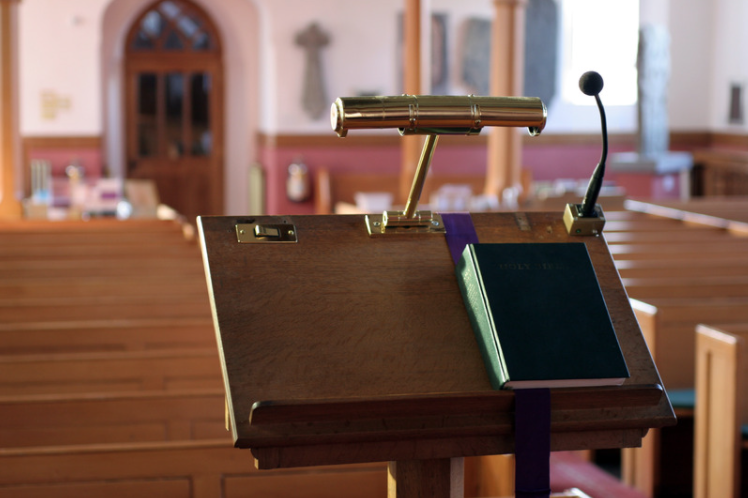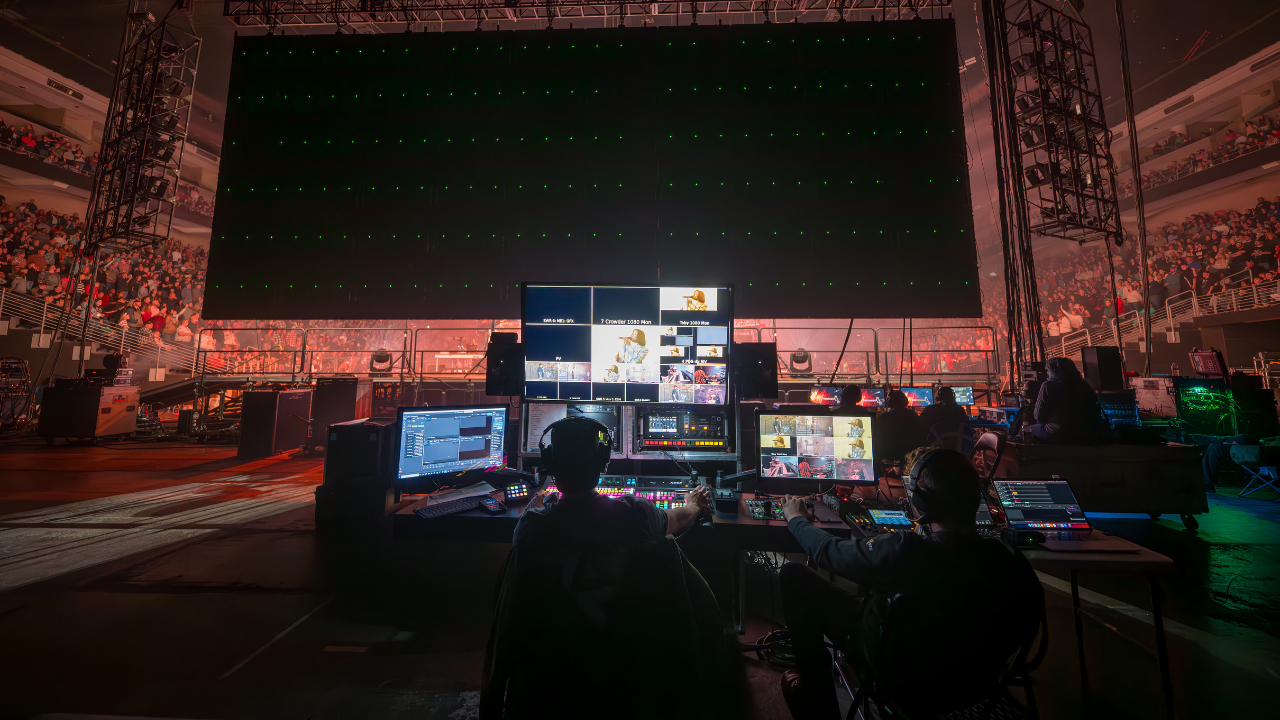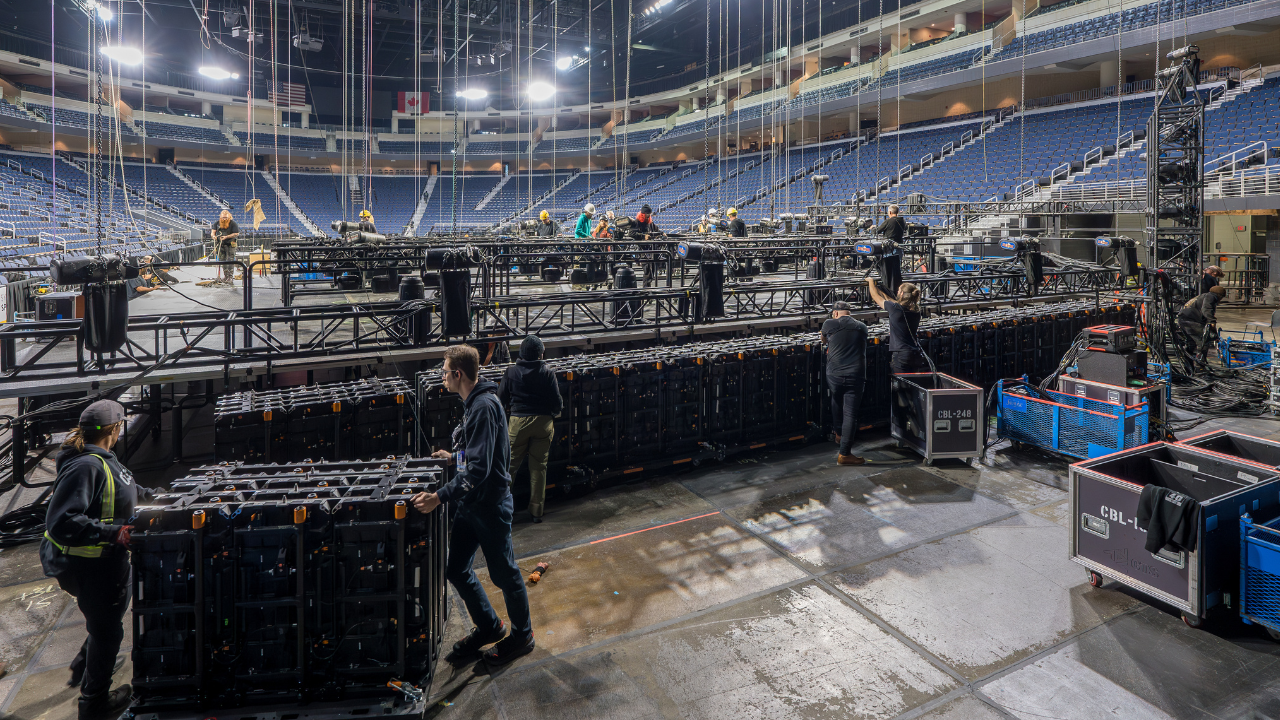How To Think Like a Production Company and Build Flexibility Into Your Permanent Install
Published on: Tuesday, February 8, 2022 - 7:00am

If your church hasn’t had a substantial renovation in the last 10-20 years, then your ministry probably doesn’t have the flexibility you’d like as far as room, technology, and stage design.
You might be contemplating some changes to your worship center, or maybe you see an entirely new sanctuary on the horizon.
What factors can you consider to ensure the AVL install portion of your project meets the needs of your church not just today, but in the future as well?
To answer that question, we’ll look at AVL installation through the experience and mindset of a production / live event company. What do churches consistently need from their AVL installs? How can churches avoid the trouble and expense of an installation that only meets their needs for the short term?
The answer to these questions and others exists in one simple word: flexibility.
Why Is Flexibility Important?
In today’s dynamic worship world, most churches want to make substantial changes to their stage design on a regular basis. This may be for special services like Christmas or Easter, for an event or sermon series, or simply for a change of season.
Whatever the reason, flexibility in your audio, visual, and lighting systems, not to mention in the stage itself, will go a long way to achieving the look and feel you want in order to bring your message home.
Another, more subtle reason churches often want to make stage design changes is to accommodate a more modern congregation.
Over the last couple of decades, people’s expectations have gotten higher, and their attention spans have gotten shorter.
Congregants of today have more sophisticated experience with technology, whether from the movie theater, the television, or the palm of their hand. Consequently, outdated presentations can leave them disconnected, or even put off.
Generally speaking, people today also have more trouble paying attention for long periods of time than they did in the past. Whether consciously or not, they still periodically expect new looks and varied experiences. Changing the room and stage design keeps things fresh, keeps congregants engaged, and ultimately keeps people coming back.
Building flexibility into your AVL systems is crucial for meeting your church’s stage design needs in the long term.
What Problems Does a Lack of Flexibility Create?
Just because you’re not equipped with a flexible AVL system or stage area doesn’t mean you won’t want to change the design and layout of the room.
For example, pastors still have ideas for what they want the stage design to look like or how they want the room to feel for a certain series.
A pastor may come in with a specific vision for the stage design. They explain what they want to do and how amazing it will be when blended with the content they’ll communicate. If there’s very little flexibility in the AVL systems and stage setup, the response may be, “That’s a really great idea, but we just can’t do it.”
In situations like this, a lack of flexibility limits the freedom and creativity of the ministry to deliver their message in the most effective way.
Often, however, a lack of flexibility doesn’t entirely preclude design changes. While not impossible, changes are much more difficult, time-consuming, and costly to implement.
So if a pastor really wants a stage change for a certain event, the staff may work to make it happen. But without existing flexibility in the systems, it will be taxing and difficult. And even if they’re able to pull it off, it often means sleepless nights and growing frustration among technical staff and volunteers.
The difficulty of such undertakings becomes prohibitive, making frequent changes impractical. And if media and technology staff have to overextend themselves on too many projects like this, they end up worn out — and you could lose them over it.
What Does Flexible Integration Look Like?
Ultimately, achieving flexibility comes from thinking beyond today. What do you wish you could have done in the past? Where do you want to go in the future?
How can you build for where you’re going, rather than for where you are right now? Here are a few examples of ways to build flexibility into each component of your AVL install, whether it’s new construction or renovation.
Audio
If today you’re running a 32-channel mix on a weekly basis, you won’t want your new AVL install to have only 32 inputs. If you’re running 32 channels today, chances are you’ll need to add channels in the future.
By anticipating the need for change and expansion, you can make better equipment selections and include the proper infrastructure in your install to more efficiently address growth.
This doesn’t mean that you need 120 inputs, but that you can plan a reasonable number of additional channels for greater flexibility and room to grow.
Video
Flexibility in video comes in many forms. One key example is related to the ability to choose different camera locations throughout your space. It involves flexibility being built into the building itself — making sure that your building is prepared for movement.
Consider not just your stage layout now, but also what you might want it to be as you grow, change, and alter the look or feel. As you consider this, evaluate what camera angles you’ll need in order to pick up new elements of design, or how you’ll capture various shots from different places regardless of the set or stage layout.
Whether it’s floor pockets, wall plates, or wireless connectivity, the decisions you make for your AVL install can ensure you’re not just limited to a couple of camera locations in your new room. Instead, you’ll have the ability to move cameras at will without a massive amount of work or the expense of additional hardware.
Lighting
Having a master plan related to lighting is key.
Whether you’re buying new fixtures to install permanently or renting them, you’ll need somewhere to plug them in (painfully obvious, we know). However, if this isn’t available, then you’re not just buying fixtures — you’re also paying an electrician to move power for you. This makes lighting much more complicated and expensive even for simple expansions or environmental changes.
Careful forethought and planning will ensure that your building has the additional power and control connectivity in the air, around the stage, and throughout the room that you’ll need for any changes you want to make.
Then, whether you’re moving fixtures, bringing in rentals, or adding permanent equipment, you won’t have to hire an electrician or run power across the ceiling in order to plug in a fixture.
This kind of planning is especially simple to implement during new construction and can save money down the road when you want to move lighting fixtures for special events or seasons.
Stage Construction
Finally, it’s also important to give your church’s stage area good structure.
During design and construction, you can create your stage area with additional rigging points, or with an open structure that has the flexibility for additional rigging points. This also works during renovation. We’re finding that many older churches are having their stages’ drywall ceilings ripped out to gain access to the steel above.
If a stage only has a couple of lighting positions and speakers hanging from the ceiling, then there’s not much flexibility available. But if the ceiling is open steel with either a lighting grid or multiple rigging points, then you can add additional lights, motors, truss, and more. And that provides a great deal of flexibility.
With the right infrastructure in place, you have the flexibility to maneuver equipment to align with your vision, regardless of the set design or pieces that need to be moved.
Build in Flexibility
No church wants to be limited in their ministry by technical shortcomings or architectural obstacles. Building flexibility into your install will help you avoid the inconveniences and limitations of a restrictive AVL and stage setup.
Whether you’re planning new construction or making substantial renovations, considering the future of your AVL requirements will help you make the choices that accommodate your needs and facilitate your message for the long term.



